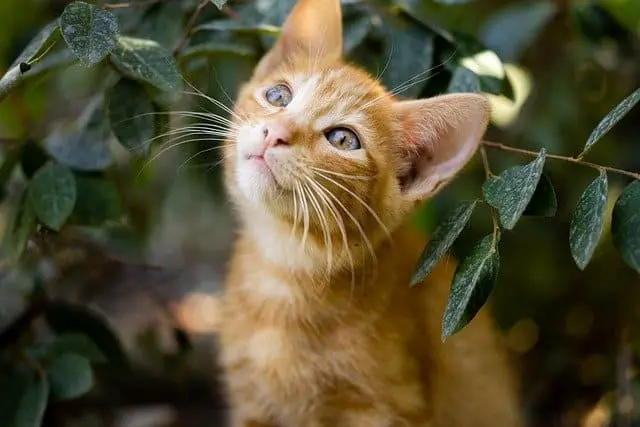Feline whiskers are highly sensitive stiff hairs that make up for the animal’s lack of close vision and help it explore territory and communicate

The cats whiskers are not only attractive and one of the outstanding characteristics of feline anatomy. They are also a powerful animal communication tool that helps you hunt, explore the territory and even express your emotions. This article reveals some of the secrets of the whiskers of the best kept or less known cats, among them: how many they have, in what way they replace the poor near vision of this animal, why they help the feline before entering a narrow hole and how you use them to move even in the dark.
The cats whiskers are not only attractive and one of the outstanding characteristics of feline anatomy. They are also a powerful animal communication tool that helps them to hunt, explore the territory and even to express their emotions. This article reveals some of the best-kept or least-known cats’ secrets about their whiskers, including: how many they have, how they make up for the poor close-up vision this animal has, why they help the feline before entering a narrow gap and how you use them to move even in the dark .
1. How many whiskers do cats have?
Cats have eight to twelve moving whiskers on each side of their noses. Although with exceptions – some have more, others less – this means that in total each feline has between 16 and 24 vibrissae (in technical language) in this area of its face.
These whiskers are different from the rest of the hairs that cover the body of the animal. The cat’s whiskers are very stiff hairs with an important function in its sense of touch , since they act as receptors.
2. The cat’s whiskers: not just under its snout
This type of stiff hair or vibrissae, however, is not only found under the cat’s snout. They can also be located above the eyes, on the chin and even on the back of the cat’s paws .
Furthermore, feline vibrissae are not just any hair. The cat’s whiskers are inserted at a depth three times greater than the rest of the fur, and they are equipped with sensitive cells at their base, which make them sensitive to almost any movement that occurs near them. These qualities explain why feline whiskers are a very special organ and one of the most developed of these animals.
3. The cat’s whiskers help it “see” up close.
Cats have trouble seeing objects closer than 12 inches, but whiskers help them create the 3D image they need
The eyes of cats, like those of many carnivores hunters, have specialized in locating prey at a distance. This explains why feline eyes have evolved to focus forward and at a distance.
This quality, however, implies some complication for furry friends: cats often have trouble seeing the closest objects clearly . Felines have difficulty focusing on objects less than 12 inches from their eyes.
Fortunately, its whiskers seem determined to come to his aid. To compensate for these near vision limitations, felines have learned to turn their whiskers forward and to capture tactile stimuli that, when they reach the brain, provide them with a very detailed three-dimensional image of what is in front of them.
4. Whiskers help the cat to explore, even in the dark
As a result of its high sensitivity, the cat’s whiskers function as an early warning of what is happening around it . The vibrissae serve to warn the animal that something is approaching its face ; in this way they can avoid collisions with walls or obstacles and avoid approaching objects that could damage their eyes or face.
This astonishing ability becomes very relevant in certain situations, including during its nocturnal forays, in case of confusion, as well as during its long hours of sleep, in which the cat lowers its guard against possible dangers.
5. Cat whiskers, will I go into this hole?
The length of the cat’s whiskers matches the width of its body, so they help you know whether or not it will enter a confined space
The length of the cat’s whiskers generally matches the approximate width of its body. This rule does not work when a cat is overweight , but it does help to get an idea of the importance of these stiff hairs.
The whiskers help you to know whether or not it will fit in a certain hole, since the length of the feline vibrissae is more or less the width of its body ; therefore, these hairs help you before entering a narrow space.
In this way, whiskers are a kind of natural rule with which to estimate whether a space is too small to fit inside. How do they do that? The normal thing is that a cat explores the space with its head before deciding to enter it, that it tries to put its head in and take it out as a previous step to introduce the rest of the body.
Again, in the case of overweight felines, this furry rule can fail, and leave the cat trapped in a hole that, despite the approval of its whiskers, turned out to be narrower than its body.
6. Cat whiskers: what do they say?
The whiskers of felines also play an important role as communication tools . How? The position of the cat’s whiskers says a lot about its mood.
Relaxed feline whiskers indicate that the animal is calm. Conversely, vibrissae will move forward when on alert. What if the cat’s whiskers flatten against its cheeks? This will be a sign that the furry companion is angry or scared .







